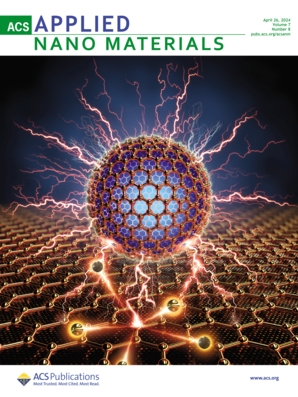Demonstration of neutron time-of-flight diffraction with an event-mode imaging detector
IF 5.3
2区 材料科学
Q2 MATERIALS SCIENCE, MULTIDISCIPLINARY
引用次数: 0
Abstract
Neutron diffraction beamlines have traditionally relied on deploying large detector arrays of 3He tubes or neutron-sensitive scintillators coupled with photomultipliers to efficiently probe crystallographic and microstructure information of a given material. Given the large upfront cost of custom-made data acquisition systems and the recent scarcity of 3He, new diffraction beamlines or upgrades to existing ones demand innovative approaches. This paper introduces a novel Timepix3-based event-mode imaging neutron diffraction detector system as well as first results of a silicon powder diffraction measurement made at the HIPPO neutron powder diffractometer at the Los Alamos Neutron Science Center. Notably, these initial measurements were conducted simultaneously with the 3He array on HIPPO, enabling direct comparison. Data reduction for this type of data was implemented in the MAUD code, enabling Rietveld analysis. Results from the Timepix3-based setup and HIPPO were benchmarked against McStas simulations, showing good agreement for peak resolution. With further development, systems such as the one presented here may substantially reduce the cost of detector systems for new neutron instrumentation as well as for upgrades of existing beamlines.利用事件模式成像探测器演示中子飞行时间衍射
中子衍射光束线传统上依赖于部署大型 3He 管探测器阵列或中子敏感闪烁体,再加上光电倍增管来有效探测特定材料的晶体学和微观结构信息。鉴于定制数据采集系统的前期成本高昂以及近期 3He 的稀缺,新的衍射光束线或现有光束线的升级需要创新的方法。本文介绍了基于 Timepix3 的新型事件模式成像中子衍射探测器系统,以及在洛斯阿拉莫斯中子科学中心的 HIPPO 中子粉末衍射仪上进行的硅粉末衍射测量的初步结果。值得注意的是,这些初步测量是与 HIPPO 上的 3He 阵列同时进行的,因此可以进行直接比较。MAUD 代码对这类数据进行了还原,从而实现了里特维尔德分析。基于 Timepix3 的设置和 HIPPO 的结果与 McStas 模拟进行了比对,结果表明峰值分辨率具有良好的一致性。随着进一步的发展,像本文介绍的系统可能会大大降低新中子仪器和现有光束线升级探测器系统的成本。
本文章由计算机程序翻译,如有差异,请以英文原文为准。
求助全文
约1分钟内获得全文
求助全文
来源期刊

ACS Applied Nano Materials
Multiple-
CiteScore
8.30
自引率
3.40%
发文量
1601
期刊介绍:
ACS Applied Nano Materials is an interdisciplinary journal publishing original research covering all aspects of engineering, chemistry, physics and biology relevant to applications of nanomaterials. The journal is devoted to reports of new and original experimental and theoretical research of an applied nature that integrate knowledge in the areas of materials, engineering, physics, bioscience, and chemistry into important applications of nanomaterials.
 求助内容:
求助内容: 应助结果提醒方式:
应助结果提醒方式:


